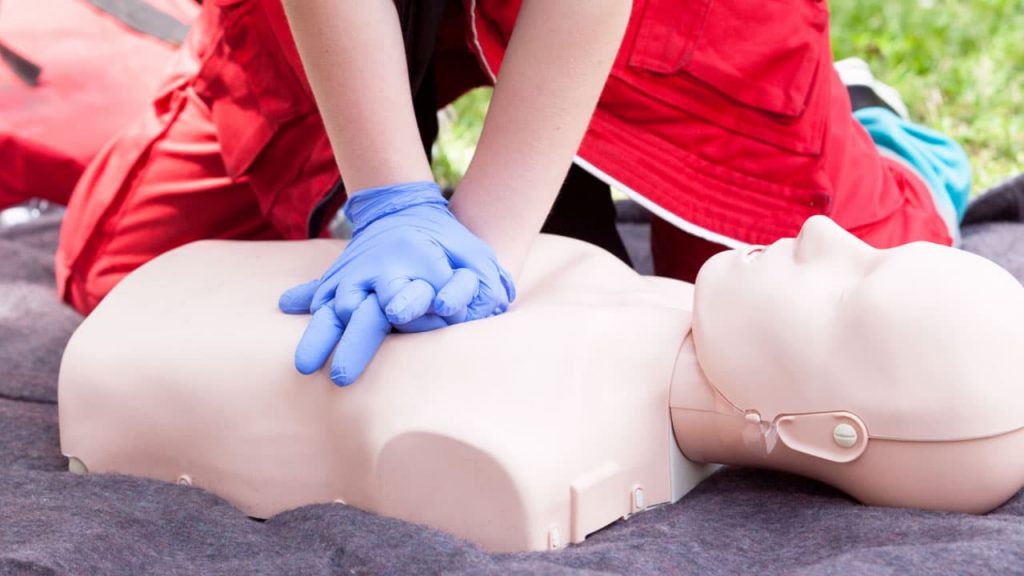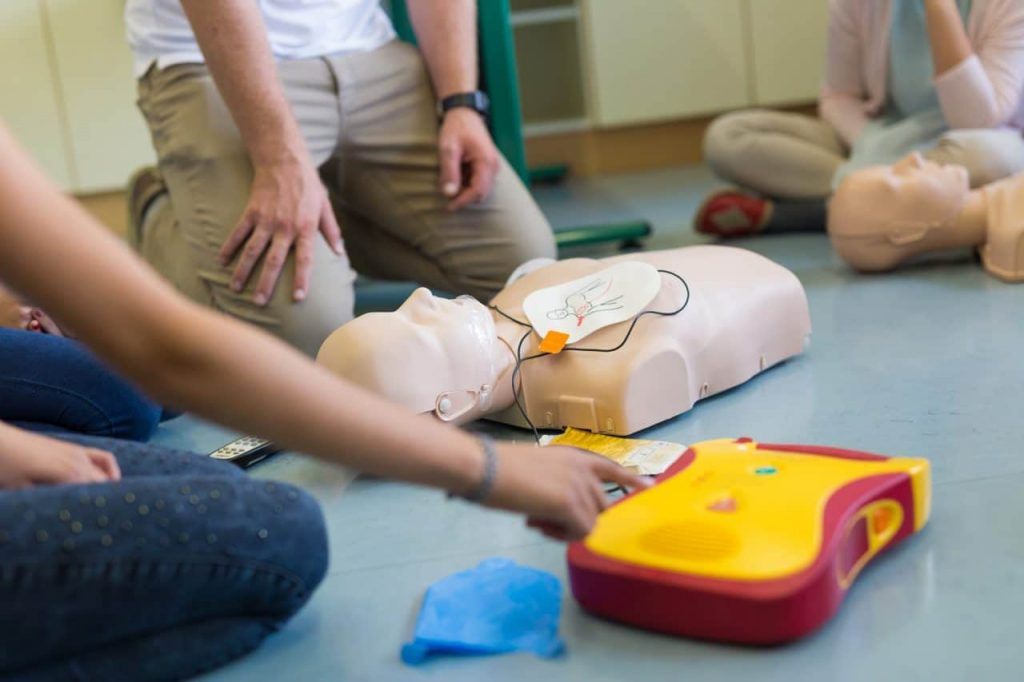Swelling is a typical physical response to injury or inflammation. Swelling might cause pain in the affected area and limit your range of motion. As a result, understanding how to cope with swelling and lessen any discomfort it may cause is important. A popular method of treating swelling is with heat or ice. While some believe that applying heat to the affected area will reduce swelling, others believe that ice is more effective. However, whether heat improves or worsens swelling is debatable.
What Causes Swelling?
Swelling is a common physical reaction to an injury or inflammation. The swollen area may feel warm and sensitive, and it may appear larger than usual. Sprains, strains, infections, allergic responses, and chronic diseases, such as arthritis, are all common causes of swelling. To avoid complications, treat swelling as soon as possible, and use ice or heat, depending on the kind of injury or disease, to relieve pain and reduce inflammation.

Bone, Muscle and Joint Injuries
Our bodies rely on bones and muscles. With their strong, rigid structure, bones offer a foundation that supports our entire body. Muscles, on the other hand, are soft tissues that have the unique capacity to contract and relax, allowing us to perform a variety of movements. There are four basic types of bone, muscle, and joint injuries: sprain, strain, dislocation, and fracture.
Sprain
A sprain occurs when a ligament is strained, torn, or injured. Ligaments bind bones together at joints. Sprains are most typically associated with the ankle, knee, wrist, and finger joints.
Dislocation
Dislocations occur when the bones that meet at a joint move out of their normal position. A violent force that tears the ligaments, causing the bones to shift out of place, usually causes this sort of damage.
Fracture
A fracture is a full bone break, chip, or crack. Fractures can be open (the fractured bone’s end breaks through the skin) or closed (the broken bone does not break through the skin). Open fractures are sometimes referred to as “compound fractures.”
Care after Injury
When an injury takes place, it can be a scary and stressful experience; knowing what to do in these situations can make or break the outcome. In cases where injuries occur, having a first aid kit on hand is important. It is true that getting hurt can be a scary and stressful event. However, having a well-stocked first aid kit and being familiar with how to use its components can significantly alter how these scenarios turn out. When dealing with an injury, remember the acronym R.I.C.E, which stands for Rest, Immobilize, Compression, and Elevation. Following these procedures can aid in the reduction of swelling, management of pain, and promote recovery.
Resting | The first stage in treating an injury is for the individual to stop all current activity and rest. It is critical not to move or straighten the injured body part because this can result in severe harm. |
Immobilize | If the person must be moved or EMS service is delayed, immobilize the injured region in the position in which it was discovered by making a splint. Otherwise, keep the patient still and avoid splinting the injury. |
Cool | If the person is not in pain, cool the affected area for 20 minutes per hour to reduce swelling and pain. For up to 48 hours, the injured area should be cooled for 20 minutes every hour. Do not rub the damaged area with ice or a cold pack. To avoid freezing the skin, place a thin, dry towel or pad between the ice and the person’s bare skin. |
Elevate | If possible, keep the injured area above the level of the heart. However, if moving the injured area causes pain, do not raise it. |

Inquire about Standard CPR & AED Training
Coast2Coast offers Standard CPR & AED courses. Learn more about it and register today! Contact our customer service team.
Avoid Heat for Swelling and Pain Relief
Heat should be avoided for fresh injuries that are still swelling. Heat will worsen the swelling and pain, which you do not want. You should also avoid using heat if your body is already warm, such as if you’re sweating. Ice, however, is a fantastic alternative since it constricts blood vessels, which lowers inflammation and pain. Heat is the better alternative for chronic injuries since it stimulates blood flow, relaxes tight muscles, and relieves hurting joints.
Heat vs. Ice: Choosing the Right Treatment
Tendinitis and Tendinosis
Tendinitis and tendinosis are two separate tendon illnesses that can cause pain and discomfort. Tendinitis is an inflammation of a tendon caused by overuse or injury, whereas tendinosis is a degenerative disorder that develops over time, frequently as a result of chronic overuse.
Tendinitis: Ice for Pain and Inflammation
Tendinitis is a painful inflammation of the tendons, which are the connective structures that link your muscles and bones. It can affect the shoulder, elbow, wrist, knee, and ankle, among other places. Pain is the most common sign of tendinitis, and it can be severe, limiting your range of motion. Tendinitis can also produce swelling and discomfort around the affected area in some circumstances.
The advised treatments for tendinitis include resting the affected area and applying ice to minimize inflammation and pain. Ice is the best method as it constricts blood vessels and slows blood flow to the affected area, reducing swelling and numbing discomfort. Applying ice to the affected area for about 15-20 minutes at a time multiple times per day will help relieve tendinitis symptoms.
Tendinosis: Heat for Relieving Stiffness
Tendinosis is a chronic disorder that develops over time as a result of repeated stress on the tendons. Tendinosis, unlike tendinitis, does not include inflammation. Instead, it causes a progressive breakdown of collagen fibers in the tendon, causing it to stiffen and lose its suppleness.
Heat is best for alleviating joint stiffness after inflammation has subsided. Heat therapy increases blood flow to the affected area, which promotes healing and reduces joint stiffness. Heat applied to the affected area for 20-30 minutes at a time, multiple times each day, can help relieve tendinosis symptoms.

Arthritis
Arthritis is a joint condition that causes pain, stiffness, and inflammation. It might be difficult to move around and perform daily duties, which can be irritating and stressful. Temperature therapy, either with heat or ice, is one method of managing arthritis pain.
Choosing the Right Solution for the Situation
Heat therapy is frequently advised for people suffering from persistent osteoarthritis, a type of arthritis in which the protecting cartilage between the joints wears away over time. The symptoms of this form of arthritis include joint pain, stiffness, and swelling. By improving blood flow to the affected area and relaxing tense muscles, moist heat, such as a warm bath or shower, can assist to alleviate these symptoms.
However, ice is the best treatment if you are experiencing a gout flare-up. Gout is a type of arthritis that produces extreme pain, swelling, and redness. To relieve these symptoms, apply ice to the affected joint, which reduces inflammation, numbs the pain, and reduces swelling.
Learn How to Provide Appropriate Care

Find your nearest Coast2Coast location and register for our Standard First Aid & CPR/AED training. Our step-by-step registration guide can help you complete your registration.
With your CPR training and certification, you can make your home, work, and community safer by offering assistance to anyone who is suffering from a medical emergency that may result in swelling. Your skills and knowledge will ensure you follow the correct steps without hesitation, ensuring the victim has a better chance of recovery.


















